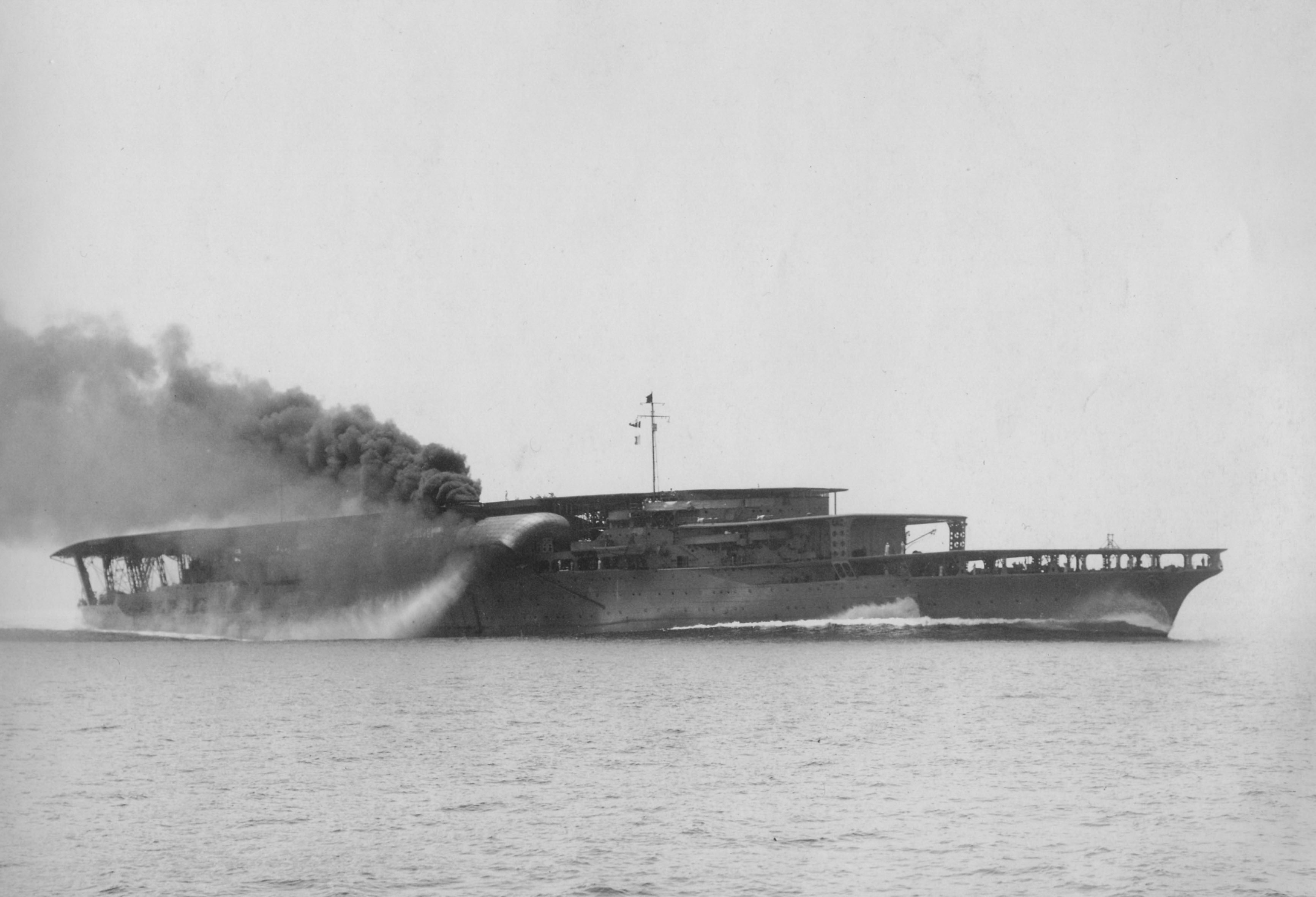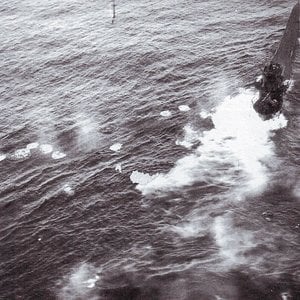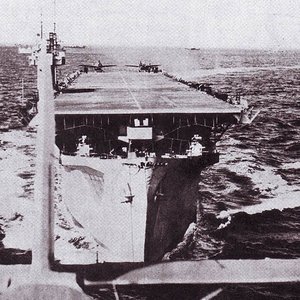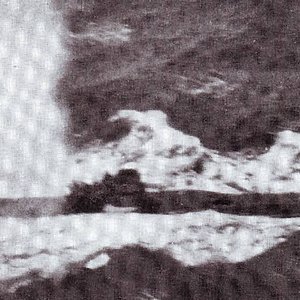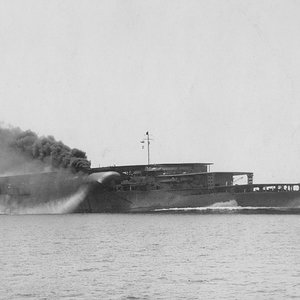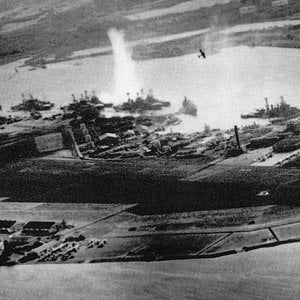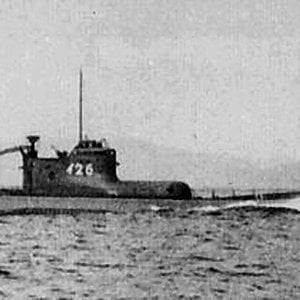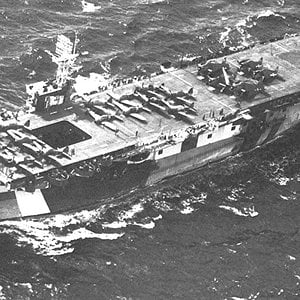Navigation
Install the app
How to install the app on iOS
Follow along with the video below to see how to install our site as a web app on your home screen.
Note: This feature may not be available in some browsers.
More options
You are using an out of date browser. It may not display this or other websites correctly.
You should upgrade or use an alternative browser.
You should upgrade or use an alternative browser.
Type: aircraft carrier
Displacement: 38,200 long tons (38,813 t) (standard)
Length: 247.65 m (812 ft 6 in)
Beam: 32.5 m (106 ft 8 in)
Draught: 9.48 m (31 ft 1 in)
Installed power: 127,400 shp (95,000 kW)
Propulsion: 4-shaft Kampon geared turbines
8 Kampon Type B boilers
Speed: 28 knots (52 km/h; 32 mph)
Endurance: 10,000 nmi (19,000 km; 12,000 mi) at 15 knots (28 km/h; 17 mph)
Complement: 1,708 (after reconstruction)
Armament: 10 × 1 – 200 mm (7.9 in) guns,[2]
8 × 2 – 127 mm (5.0 in) guns,
11 × 2 – 25 mm (0.98 in) AA guns
Armor: Belt: 152 mm (6.0 in)
Deck: 38 mm (1.5 in)
Aircraft carried: 90 (total); 72 (+ 18 in storage) (1936)
18 Mitsubishi A6M Zero, 27 Aichi D3A, 27 Nakajima B5N (+ 9 in storage) (Dec. 1941)
Service record
Part of: First Air Fleet
Carrier Striking Task Force
Operations: 28 January Incident
Second Sino-Japanese War
World War II, Pacific War:
Attack on Pearl Harbor
Invasion of Rabaul
Bombing of Darwin
Invasion of Java
Battle of Midway
Kaga (Japanese: 加賀) was an aircraft carrier of the Imperial Japanese Navy (IJN), named after the former Kaga Province in present-day Ishikawa Prefecture. Originally intended to be one of two Tosa-class battleships, Kaga was converted under the terms of the Washington Naval Treaty to an aircraft carrier as the replacement for the battlecruiser Amagi, which had been damaged during the 1923 Great Kanto earthquake. Kaga was rebuilt in 1933–35, increasing her top speed, improving her exhaust systems, and adapting her flight decks to more modern, heavier aircraft.
The third Japanese aircraft carrier to enter service, Kaga figured prominently in the development of the IJN's carrier striking force doctrine. The doctrine, which grouped carriers together to give greater mass and concentration to their air power, was a revolutionary strategic concept at the time. The employment of this doctrine was crucial in enabling Japan to attain its initial strategic goals during the first six months of the Pacific War.
Kaga's aircraft first supported Japanese troops in China during the Shanghai Incident of 1932 and participated in the Second Sino-Japanese War in the late 1930s. With other carriers, she took part in the Pearl Harbor raid in December 1941 and the invasion of Rabaul in the Southwest Pacific in January 1942. The following month her aircraft participated in a combined carrier airstrike on Darwin, Australia, helping secure the conquest of the Dutch East Indies by Japanese forces. She missed the Indian Ocean raid in April as she had to return to Japan for permanent repairs after hitting a rock in February.
After repairs Kaga rejoined the 1st Air Fleet for the Battle of Midway in June 1942. After bombarding American forces on Midway Atoll, Kaga and the other carriers were attacked by American aircraft from the carriers Enterprise, Hornet, and Yorktown. Dive bombers from Enterprise severely damaged Kaga; when it became obvious she could not be saved, she was scuttled by Japanese destroyers to prevent her from falling into enemy hands. The loss of Kaga and three other IJN carriers at Midway was a crucial strategic defeat for Japan and contributed significantly to Japan's ultimate defeat in the war. In 1999, debris from Kaga was located on the ocean floor; the main body of the carrier has not yet been found.
Contents
1 Design and construction
1.1 Flight deck arrangements
1.2 Armament and armor
1.3 Propulsion
2 Early service and development of carrier doctrine
3 Reconstruction
4 China incident
5 World War II
5.1 Pearl Harbor
5.2 Pacific conquest
5.3 Battle of Midway
5.3.1 Midway raid
5.3.2 Sinking
6 Wreck survey
7 Notes
8 Footnotes
9 References
10 External links
[edit] Design and constructionSee also: Tosa class battleship
Kaga was laid down as a Tosa-class battleship, and was launched on 17 November 1921 at the Kawasaki Heavy Industries shipyard in Kobe. On 5 February 1922 both Tosa-class ships were canceled and scheduled to be scrapped under the terms of the Washington Naval Treaty.[3]
The Treaty authorized conversion of two battleship or battlecruiser hulls into aircraft carriers of up to 33,000 long tons (34,000 t) standard displacement. The incomplete battlecruisers Amagi and Akagi were initially selected, but the Great Kantō Earthquake of 1923 damaged Amagi's hull beyond economically feasible repair, and Kaga was selected as her replacement. The formal decision to convert Kaga to an aircraft carrier was issued 13 December 1923, but no work took place until 1925 as new plans were drafted and earthquake damage to the Yokosuka Naval Arsenal was repaired. She was officially commissioned on 31 March 1928, but this signified only the beginning of sea trials. She joined the Combined Fleet (Rengo kantai) on 30 November 1929 as the IJN's third carrier to enter service, after Hōshō (1922) and Akagi (1927).[4]
Kaga was completed with a length of 238.5 meters (782 ft 6 in) overall. She had a beam of 31.67 meters (103 ft 11 in) and a draft at full load of 7.92 meters (26 ft 0 in). She displaced 26,900 long tons (27,300 t) at standard load, and 33,693 long tons (34,234 t) at full load, nearly 6,000 long tons (6,100 t) less than her designed displacement as a battleship.[5] Her complement totaled 1340 crewmembers.[6]
[edit] Flight deck arrangements
Kaga as completed, with all three flight decks visibleKaga, like Akagi, was completed with three superimposed flight decks, the only carriers ever to be designed so. The British carriers converted from "large light cruisers", HMS Glorious, HMS Courageous, and HMS Furious, each had two flight decks, but there is no evidence that the Japanese copied the British model. It is more likely that multiple decks were developed independently in the two navies as a means to launch as many aircraft as quickly as possible. Kaga's main flight deck was 171.2 meters (561 ft 8 in) long, her middle flight deck was only about 15 meters (49 ft 3 in) long and started in front of the bridge, and her lower flight deck was approximately 55 meters (180 ft 5 in) long. The utility of her middle flight deck was questionable as it was so short that only some of the lightly loaded aircraft could use it, even in an era when the aircraft were much lighter and smaller than they were during World War II.[7] At any rate the ever-increasing growth in aircraft performance, size and weight during the 1930s meant that even the bottom flight deck was no longer able to accommodate the take-off roll required for the new generations of aircraft being fielded and it was plated over when the ship was modernized in the mid-1930s.[8] Kaga's main flight deck was completely flat until a conning tower was added during
Displacement: 38,200 long tons (38,813 t) (standard)
Length: 247.65 m (812 ft 6 in)
Beam: 32.5 m (106 ft 8 in)
Draught: 9.48 m (31 ft 1 in)
Installed power: 127,400 shp (95,000 kW)
Propulsion: 4-shaft Kampon geared turbines
8 Kampon Type B boilers
Speed: 28 knots (52 km/h; 32 mph)
Endurance: 10,000 nmi (19,000 km; 12,000 mi) at 15 knots (28 km/h; 17 mph)
Complement: 1,708 (after reconstruction)
Armament: 10 × 1 – 200 mm (7.9 in) guns,[2]
8 × 2 – 127 mm (5.0 in) guns,
11 × 2 – 25 mm (0.98 in) AA guns
Armor: Belt: 152 mm (6.0 in)
Deck: 38 mm (1.5 in)
Aircraft carried: 90 (total); 72 (+ 18 in storage) (1936)
18 Mitsubishi A6M Zero, 27 Aichi D3A, 27 Nakajima B5N (+ 9 in storage) (Dec. 1941)
Service record
Part of: First Air Fleet
Carrier Striking Task Force
Operations: 28 January Incident
Second Sino-Japanese War
World War II, Pacific War:
Attack on Pearl Harbor
Invasion of Rabaul
Bombing of Darwin
Invasion of Java
Battle of Midway
Kaga (Japanese: 加賀) was an aircraft carrier of the Imperial Japanese Navy (IJN), named after the former Kaga Province in present-day Ishikawa Prefecture. Originally intended to be one of two Tosa-class battleships, Kaga was converted under the terms of the Washington Naval Treaty to an aircraft carrier as the replacement for the battlecruiser Amagi, which had been damaged during the 1923 Great Kanto earthquake. Kaga was rebuilt in 1933–35, increasing her top speed, improving her exhaust systems, and adapting her flight decks to more modern, heavier aircraft.
The third Japanese aircraft carrier to enter service, Kaga figured prominently in the development of the IJN's carrier striking force doctrine. The doctrine, which grouped carriers together to give greater mass and concentration to their air power, was a revolutionary strategic concept at the time. The employment of this doctrine was crucial in enabling Japan to attain its initial strategic goals during the first six months of the Pacific War.
Kaga's aircraft first supported Japanese troops in China during the Shanghai Incident of 1932 and participated in the Second Sino-Japanese War in the late 1930s. With other carriers, she took part in the Pearl Harbor raid in December 1941 and the invasion of Rabaul in the Southwest Pacific in January 1942. The following month her aircraft participated in a combined carrier airstrike on Darwin, Australia, helping secure the conquest of the Dutch East Indies by Japanese forces. She missed the Indian Ocean raid in April as she had to return to Japan for permanent repairs after hitting a rock in February.
After repairs Kaga rejoined the 1st Air Fleet for the Battle of Midway in June 1942. After bombarding American forces on Midway Atoll, Kaga and the other carriers were attacked by American aircraft from the carriers Enterprise, Hornet, and Yorktown. Dive bombers from Enterprise severely damaged Kaga; when it became obvious she could not be saved, she was scuttled by Japanese destroyers to prevent her from falling into enemy hands. The loss of Kaga and three other IJN carriers at Midway was a crucial strategic defeat for Japan and contributed significantly to Japan's ultimate defeat in the war. In 1999, debris from Kaga was located on the ocean floor; the main body of the carrier has not yet been found.
Contents
1 Design and construction
1.1 Flight deck arrangements
1.2 Armament and armor
1.3 Propulsion
2 Early service and development of carrier doctrine
3 Reconstruction
4 China incident
5 World War II
5.1 Pearl Harbor
5.2 Pacific conquest
5.3 Battle of Midway
5.3.1 Midway raid
5.3.2 Sinking
6 Wreck survey
7 Notes
8 Footnotes
9 References
10 External links
[edit] Design and constructionSee also: Tosa class battleship
Kaga was laid down as a Tosa-class battleship, and was launched on 17 November 1921 at the Kawasaki Heavy Industries shipyard in Kobe. On 5 February 1922 both Tosa-class ships were canceled and scheduled to be scrapped under the terms of the Washington Naval Treaty.[3]
The Treaty authorized conversion of two battleship or battlecruiser hulls into aircraft carriers of up to 33,000 long tons (34,000 t) standard displacement. The incomplete battlecruisers Amagi and Akagi were initially selected, but the Great Kantō Earthquake of 1923 damaged Amagi's hull beyond economically feasible repair, and Kaga was selected as her replacement. The formal decision to convert Kaga to an aircraft carrier was issued 13 December 1923, but no work took place until 1925 as new plans were drafted and earthquake damage to the Yokosuka Naval Arsenal was repaired. She was officially commissioned on 31 March 1928, but this signified only the beginning of sea trials. She joined the Combined Fleet (Rengo kantai) on 30 November 1929 as the IJN's third carrier to enter service, after Hōshō (1922) and Akagi (1927).[4]
Kaga was completed with a length of 238.5 meters (782 ft 6 in) overall. She had a beam of 31.67 meters (103 ft 11 in) and a draft at full load of 7.92 meters (26 ft 0 in). She displaced 26,900 long tons (27,300 t) at standard load, and 33,693 long tons (34,234 t) at full load, nearly 6,000 long tons (6,100 t) less than her designed displacement as a battleship.[5] Her complement totaled 1340 crewmembers.[6]
[edit] Flight deck arrangements
Kaga as completed, with all three flight decks visibleKaga, like Akagi, was completed with three superimposed flight decks, the only carriers ever to be designed so. The British carriers converted from "large light cruisers", HMS Glorious, HMS Courageous, and HMS Furious, each had two flight decks, but there is no evidence that the Japanese copied the British model. It is more likely that multiple decks were developed independently in the two navies as a means to launch as many aircraft as quickly as possible. Kaga's main flight deck was 171.2 meters (561 ft 8 in) long, her middle flight deck was only about 15 meters (49 ft 3 in) long and started in front of the bridge, and her lower flight deck was approximately 55 meters (180 ft 5 in) long. The utility of her middle flight deck was questionable as it was so short that only some of the lightly loaded aircraft could use it, even in an era when the aircraft were much lighter and smaller than they were during World War II.[7] At any rate the ever-increasing growth in aircraft performance, size and weight during the 1930s meant that even the bottom flight deck was no longer able to accommodate the take-off roll required for the new generations of aircraft being fielded and it was plated over when the ship was modernized in the mid-1930s.[8] Kaga's main flight deck was completely flat until a conning tower was added during

